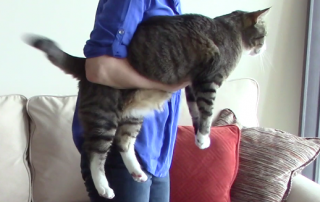Arthritis in Cats
Many cats develop arthritis, especially after age twelve. Animals can't tell us when they feel pain, so we have to watch subtleties in their behavior and body language. Older cats often hesitate before jumping down from surfaces. Although cats can climb, jump, and leap onto higher surfaces, most prefer walking up and down using [...]






